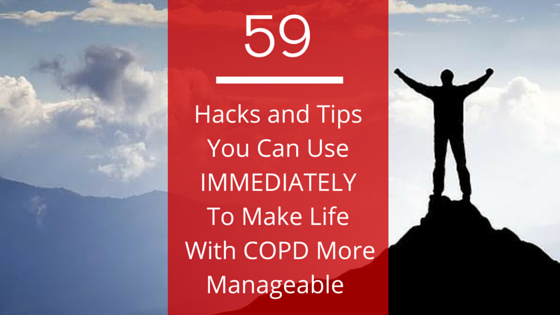
Successfully treating and managing your COPD is like playing a game of chess. You aim to stay 3 steps ahead of the disease at all times, but there’s always a chance that your opponent, COPD, has a trick move up its sleeve.
Because there is no cure for the disease, the goal of treating COPD is to manage your symptoms and to maintain or improve your quality of life.
You have read countless articles on how to care for your COPD, you’ve been told that you need to make significant changes by your doctor, and you have a support system trying to help you in any way they can.
But sometimes, despite everything you know, everything you’ve been told, and the amount of help you get from your support system it can seem impossible to make those changes. It can be extremely difficult to adhere to all of your treatments day in and day out. Other times it can seem like no matter what you do, no progress is being made.
We have compiled a list of 59 simple hacks and tips to help you better manage your COPD, adhere to treatment methods, and simplify daily life, starting today!
10 Hacks and Tips for Your Diet and Nutrition
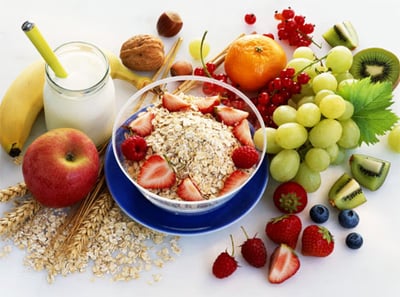
Your diet and nutrition play a significant role in treating and managing COPD and whether you like it or not, the healthier you eat, the better results you will see. The tips below aren’t diet guidelines, but they are meant to help you eat healthier, stick to a diet, and make smarter choices with your diet. If you want more information on COPD diet guidelines you can view best-selling author and nutritionist Kellie Hill’s guest post on our blog here.
1. Start simple and opt for the healthier choice.
- Making significant changes to your diet is not an easy task. By starting simple and gradually making changes to your diet you will find it easier to stick with your diet changes. Instead of fried chicken opt for grilled chicken. Instead of white bread opt for whole-grain white bread. Then progress to whole grain wheat bread. Use this process for all of the diet changes you have to make to make your diet more managable.
2. Stop buying junk food and stockpile healthy snacks
- Practicing self-control and cutting out junk food from your diet is a lot easier when your go-to snacks aren’t in your house. However, you will need to replace those snacks at home so you don’t go hungry! Stock up on healthy snacks like nuts, fresh fruit, and granola bars.
3. Start adding vegetables to every meal
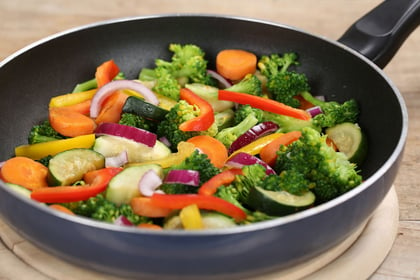
- Adding vegetables to every meal may require a little creativity, but it can make a big difference in your diet. Vegetables are a great way to add flavor to some of your favorite dishes and provide you with good, clean energy. You can cook them into the main entrée or you can serve them as a side. This is also a great way to ensure you are eating the recommended amount of servings per day.
4. Stop skipping meals, especially breakfast
- COPD is a very demanding disease. Due to the amount of energy it requires from you, studies have shown you may need as many as 10 times the calories as a healthy person. You should make sure that you never skip a meal to ensure you have enough energy to last you the entire day.
5. Keep a food journal to be mindful of what you eat
- Holding yourself accountable on a diet is a daunting task when you’re craving a nice juicy cheeseburger or some cheesecake. If you keep a food journal and record everything you eat, you will no longer be able to brush your unscheduled cheat meals and snacks under the rug. This isn’t to say you can’t enjoy some of your old favorites from time to time; it’s more of a tool to help you stay on track. Here is a great example of a food journal from the Cleveland Clinic.
6. Eat smaller meals more frequently
- You’ve seen this tip countless times, but it’s so important we had to include it on our list. With COPD, overeating can cause discomfort that has the ability to derail your entire day. When you overeat your stomach puts pressure on your diaphragm causing you to feel breathless and uncomfortable. By eating smaller meals more frequently you are providing your body with a constant source of energy and preventing over eating.
7. Use a smaller plate to avoid overeating

- To help with portion control and to prevent overeating choose to use a smaller plate than normal. By using a smaller plate your portions look bigger, “trick” your brain into being satisfied, and leave you feeling full. On the flip side, if you took those same portions and used them on a large plate, you may not feel satisfied and go back for more. The picture above shows the same portion sizes on two different plates. You can see that the smaller plate looks like it has more food, which will help trick your brain into feeling full once you finish your meal.
8. Stop eating before you get full
- One of the most common reasons we overeat is that it takes about 15 minutes for our brain to realize we are full. The best way to combat this is by eating until you feel like you are 75-80% full and then wait. This will give your brain enough time to process how full you actually are.
9. Make smoothies or use a juicer to get more servings of fruits and vegetables
- COPD symptoms and COPD medications are known to cause appetite disturbances in some people and can make it difficult to eat. It’s extremely important that you have a healthy and balanced diet, so try making smoothies or juicing to have a delicious and easy way to consume fruits and vegetables. Here are some popular juice recipe sites:
- JuiceRecipes.com
- Juice Recipes That Are Good for the Respiratory System
- Juice Recipes from SeriousEats.com
10. Drink more water
- Water should be your go-to drink every day of the week. It can help manage your COPD symptoms by thinning out your mucus, it can prevent dry mouth, and more! You should drink at least eight 8oz glasses of water every day, if not more.
If you want some more help with your diet you can download Kellie Hill’s COPD Meal Plan here!
4 Hacks and Tips To Help You Drink More Water

For some people, water is their favorite thing to drink. For others, drinking water is like a chore. If you find yourself in the group that is not fond of it here are some tips to help you drink more water.
1. Drink water before anything else
- Because water can benefit your COPD in a number of different ways, drink your water before you drink anything else. After you have hit your daily goal of eight 8oz glasses, reward yourself with one of your favorite beverages.
2. Get a nice water bottle or cup
- Get yourself a nice water bottle or cup to help you drink more water. Having a designated bottle or cup that you use for water every day will help you remember to drink more water and it can even make it more enjoyable. Consider purchasing a large water bottle, such as a Nalgene or a Hydro Flask. Doing so will encourage you to drink the entire water bottle so you can easily reach your daily goal of 64oz.
3. Naturally flavor your water
- If you have a hard time drinking more water because you don’t like the way it tastes or if you think it’s boring, you can naturally flavor your water! To naturally flavor your water cut up some fresh fruit and add it to a pitcher or jar of water, then let it sit overnight in your refrigerator and you will have delicious fruit flavored water in the morning. Click here for some great flavored water recipes.
4. Set daily water consumption goals
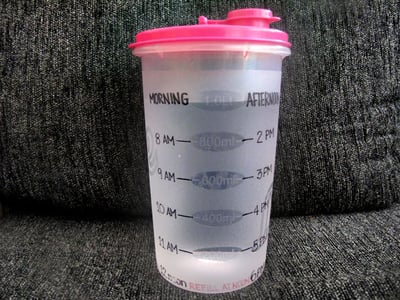
- In order to make sure you are drinking enough water you can set daily water consumption goals. To make it easier to track how much water you have consumed, you can mark your water bottle. There are a couple different ways you can do this; mark it by ounces or mark it by time of day.
10 Hacks and Tips to Help You Exercise with COPD
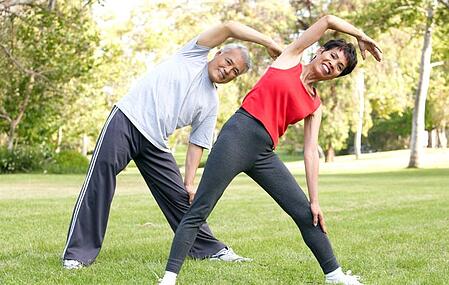
Although it seems counter-productive, exercising is one of the most effective ways to treat and manage your COPD. Once you have a regular exercise routine you will notice your symptoms aren’t as severe, you get better quality sleep, you have an increased appetite, and surprisingly you have more energy. These tips and hacks will help you exercise more frequently and hopefully make exercising easier for you.
1. Make an exercise schedule and stick to it
- The easiest way to add things to your routine is to have a consistent schedule so it becomes a regular part of your everyday life. Set yourself a workout schedule that is within your doctor’s guidelines. For example if your doctor wants you to exercise 4 days a week, set a schedule for the month ahead of you and workout every other day, including weekends. Here is an example of an exercise schedule you can follow from Healthline, just remember to follow your doctor's orders and to listen to your body.
2. Join a gym
- One way to get yourself to exercise more is by joining a gym. Because you are paying a monthly membership fee you will be more likely to go so you don’t waste your money. If possibile, choose a gym that is close to home and easy to access. You don't want to give yourself any reasons to make up some excuses as to why you can't make it to the gym.
3. Don’t join a gym and pay yourself to workout
- Instead of spending $20-$100 per month on a gym membership, take that money and pay yourself for working out! You can workout at home, outside, at the park, or wherever you choose! It’s a great system if you can stay honest with yourself. Pay yourself a little bit each workout or pay yourself a lump sum at the end of the month.
4. Exercise in the comfort of your own home
- If you don’t want to spend your money on a monthly gym membership or if you don’t want to exercise in front of strangers you can easily get your exercise in at home! There are numerous websites that have video workouts you can follow, you can use your workout routines from pulmonary rehab, or you can do exercises you already know. To help you get a good start, here are a couple of articles and videos that go over the different types of low impact exercises to do at home:
- 15 Minute Low Impact Senior Workout
- 80 of the Best Strengthening, Stretching, Flexibility, Balance, and Posture Exercise Videos
- Recommended Workouts for COPD from Sit and Be Fit
5. Create an exercise game to your favorite TV show or movie
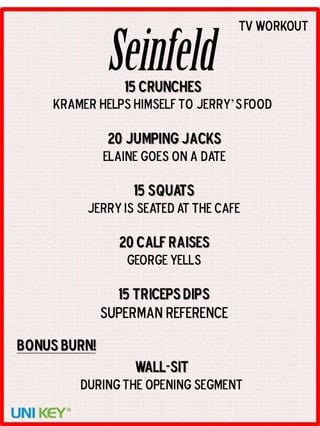
- One creative way you can get more exercise in is by creating an exercise game to your favorite show or movie. It’s quite simple; you set rules based on common actions and sayings by the actors. For example if you were to use the show Law and Order, one rule could be “Do 10 bicep curls when they interrogate a suspect.” Make several rules like this to ensure you are getting a good workout. Here is a list of TV show workouts you can use from Buzzfeed. The exercises of these workouts will need to be modified to match your specific workout program.For example, instead of pushups do bicep curls or shoulder presses. However, these are a great starting point for you and you can use the same rules listed by Buzzfeed.
6. Exercise/stretch during the commercials of whatever you’re watching
- If you don’t want to make an exercise game to follow you can simply exercise during the commercials of whatever you’re watching. You can be watching a TV series, a movie on TV, or a sporting event it really doesn’t matter. This is an easy regiment to follow and it gives you nice breaks between exercises. If you’re watching Netflix you should get your exercise in when it is in-between episodes or pause the show halfway through.
7. Use household items for weight lifting instead of buying weights
- You might not realize it, but you most likely already have all the tools you need to workout at home. You can use soup cans, quarts of milk, water bottles, or books to do your strength exercises. Once you build up your strength you can opt to purchase some weights, or you can just grab heavier household items. If you need some ideas for items you can use for your workout, click here to view a comprehensive list of different household items you can use with their corresponding weight.
8. Warm up, cool down, and stretch to prevent injuries

- Warming up, cooling down, and stretching are essential to working out. All three things help prevent injuries during and after your workout. Stretching should be done before and after your workout to help keep you loose, help your muscles recover from your workout, and it is actually quite beneficial for COPD on its own.
9. Opt to take the stairs
- Walking is one of the best exercises for COPD; it gives you cardiovascular exercise without putting too much stress on your lungs. Taking the stairs is pushing your cardiovascular exercise to the next level. By opting to take the stairs you will notice that your conditioning and stamina improve over time. Use your best judgment; if you are just starting to exercise regularly, if you aren’t having a good breathing day, or if you have to go to the 19th floor, you should skip the stairs.
10. Park farther away from the entrance of the store or place you are going
- By parking farther away from the entrance of your destination you are forcing yourself to exercise more. This is a great way to get more steps in every day and like opting to take the stairs, you will notice your stamina and conditioning start to improve the more you do this.
6 Hacks and Tips to Help You Remember to Take Your Medication

Taking your medications exactly as prescribed by your doctor will give you the best results, but it can be difficult to stay on schedule everyday. Things come up, you lose track of time, you forget if you took it. We’ve all been there. These tips and hacks will help you remember to take your medications exactly as your doctor prescribed!
1. Use a pillbox or multiple pillboxes
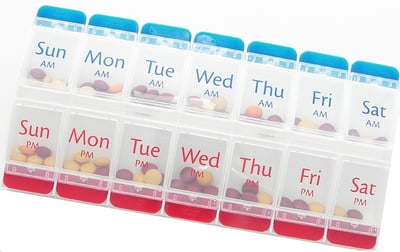
- This one is pretty self-explanatory, but a pillbox will help you organize all of your medications you need to take by day. An easy and efficient way to organize your meds. This AM/PM 7-day pill box from Walgreens is less than $10 or you can get one at any pharmacy or online!
2. Keep your medications in an open area where you spend a lot of or most of your time
- By keeping your medications out in the open in an area where you spend most of your time you will be more likely to remember to take them. When you put them in a cabinet it’s easy to forget about them when you get busy.
3. Set alarms on your phone
- To help you remember to take your meds at the correct time of day you can set multiple alarms on your cell phone. You can set the alarm to have a written message telling you which medication you are supposed to take at that time so you don’t get confused. You can even change the alarm sound to correspond with certain medications. Here are a couple articles with step-by-step instructions on how to set multiple daily alarms on your iPhone, Android, or Windows phone:
- Setting Daily Alarms on Your iPhone
- Setting Daily Alarms on Your Android Phone
- Setting Daily Alarms on Your Windows Phone
4. Set physical reminders
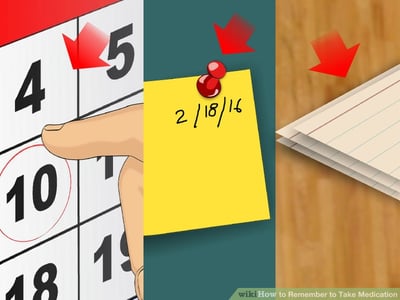
- Setting physical reminders to take your medications might work better for you than other methods. You can get a large calendar or write small notes on sticky notes and keep them in an area that you spend most of your time in. Each time you pass your physical reminder you will help remember when you need to take your medication.
5. Pair the act of taking your medicine with another physical act
- To help condition your mind to remember to take your medications, you can pair the act of taking your medicine with another thing you do every day. For example, take your AM medications right before or right after you brush your teeth. Or take your AM medications as you are preparing your breakfast. For your PM medications, you can take them before or after you walk your dog. Or you can take them as you sit down to watch your favorite show. If you need to take your medications with food, plan your medication schedule around your meals.
6. Use medication monitoring bottles
- This method is fairly new, but it will probably become much more popular over the next few years. Medication monitoring bottles are essentially smart medication bottles that connect with your smartphone to track how you are taking your medications. You can set up custom reminders like on-bottle lights and chimes or automated phone calls and text messages.
15 Hacks and Tips to Help You Get a Better Night’s Sleep

Sleep plays an important role in your overall health and in treating your COPD. Lack of sleep can worsen your symptoms, weaken your immune system, and if you have a hard time sleeping that may be an indicator of another underlying problem like depression or obstructive sleep apnea. These hacks and tips will help you get a better night’s sleep without using sleeping pills or sleep aids.
1. Exercise on a regular basis to help regulate your sleeping patterns
- Exercising is one of the best ways you can try to get a better night of sleep. It’s easy to see why exercising would help you sleep better since you are using more energy during the day and your body needs sleep to recover from your workout, but just make sure you don’t exercise too late in the day. Exercising a couple hours before you go to sleep can actually make it harder for you to fall asleep since your body and brain are still wide awake from your workout.
2. Avoid bright screens a couple of hours before bed

- Whether it’s your TV, cell phone, tablet, or computer the bright screens can cause you to have problems falling asleep. Studies have shown that the bright screens can alter sleepiness and alertness while also suppressing melatonin levels. All of these effects can make falling asleep take longer, reduce your quality of sleep, and leave you feeling more tired the next day. Allow yourself 2-3 hours of screen-free time before you go to bed. If you need to stimulate your mind, read a printed book or magazine.
3. Have a set sleep schedule, including weekends
- Setting a routine to follow before you go to bed and having a set sleep schedule to follow will help condition your body to fall asleep at the same time each night. Just like you have a routine when you wake up, set a routine to follow before you go to bed. It takes at least 21 days of following the same routine to condition your body, so be consistent and don’t make excuses as to why you should stay up. Researches have found that it may take well over the 21 day mark to form a new habit depending on the complexity and the difficulty of your new habit. However, following a sleep schedule should be closer to the 21 day mark. You can read more about how long it takes to form a new habit here.
4. Try showering or taking a bath before bed
- Whether you have a set routine before bed or you just go to bed when you feel like it, consider taking a shower or a bath before bed. Taking a hot shower or bath before you go to sleep can help your body relax, make you feel tired, and help you fall asleep faster. Not to mention it can cut back on the time it takes you to get ready in the morning. You know your body best; so if hot showers/baths negatively affect your breathing too much, avoid them before bed.
5. Use your bedroom for sleep and sex only
- We’ve mentioned conditioning your brain and your body a few times in this post before, and this is another way to condition your body to fall asleep faster. When you lay awake in your bed and play on your phone/computer or watch movies/TV your brain thinks of your bed as a place to stay awake and relax. By reserving your bed for sleep and sex only, you will find it easier to fall asleep at night. Don't be afraid to have an active sex life with COPD either. You may have to make some adjustments but where there's a will, there's a way.
6. Avoid caffeine in the afternoon
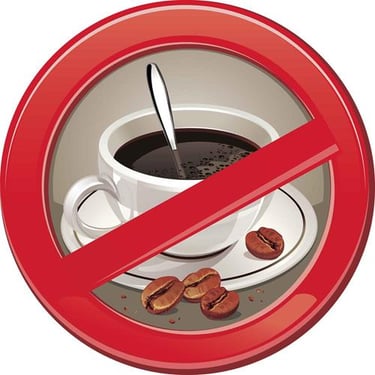
- Caffeine and COPD don’t mix that well to start, but if you are an avid coffee or tea drinker you should do your best to avoid drinking caffeine in the afternoon. The effects of caffeine can last longer than you think and they can make it extremely difficult to fall asleep. If you can’t give up your afternoon coffee or tea, switch to decaf.
7. Clear your mind before bed
- Falling asleep with a lot on your mind is never easy to do. You usually end up tossing and turning worrying about whatever is on your mind. To help ease your mind try to resolve any conflicts you may have before bed and write down a list of your problems/worries along with what you can do to solve them.
8. Meditate before bed
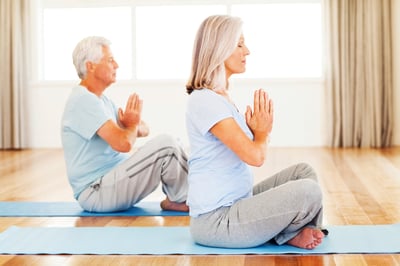
- Meditation can help you in so many ways, from warding off feelings of depression to improving your sleep quality. We recommend practicing mindfulness meditation, which you can read more about here. By meditating before bed you will put yourself in an extremely relaxed and peaceful state. This will not only help you fall asleep faster, but it will help clear your mind of any worries before bed. If you aren't sure where to start, click here to read more about mindfullness meditation.
9. Avoid heavy meals before bed
- Despite the common food coma that hits after you eat a large meal, eating a heavy meal before bed can actually keep you up. This is especially true if you’re eating a meal that is high in protein since your body uses protein for energy. Make sure you eat your dinner a few hours before bedtime and if you get hungry after dinner, opt for a small light snack.
10. Get checked for sleep apnea
- It’s estimated that 10-15% of people with COPD also suffer from sleep apnea, medically known as overlap syndrome. If you wake up feeling fatigued, suffer from morning headaches, awaken in the middle of the night from feelings of breathlessness, or if you snore excessively you should consider talking to your doctor about getting tested for sleep apnea. For more information on sleep apnea click here.
11. Make your room darker

- If you’re a light sleeper or if you are bothered by light when you sleep you should take extra steps to make your room darker. You can get blackout curtains from Walmart to prevent the sun from glaring into your room. You can get an alarm clock that allows you to dim the lights on it. You can cover your alarm clock when you go to sleep. Seriously give this one a try if you have trouble sleeping, a dark room can help you fall asleep faster and stay asleep longer. Darkness also helps to increase the production levels of melatonin in your brain.
12. Incorporate relaxing activities into your routine as you get ready for bed
- Finding something that is calming and relaxing to do will help you wind down before bed. You can meditate like mentioned above, you can listen to soothing music, or you can read a printed book just to name a few options. Once you find a relaxing activity that you enjoy and that helps you get sleepy, continue to do it every day before you go to bed. This will teach your brain to associate that activity with going to sleep, which over time will make falling asleep easier for you.
13. Check your medication side-effects to see if any of your meds interfere with sleep
- If you are having trouble sleeping you can contact your doctor to see if any of your medications are causing you to have these troubles. Your doctor will be able to recommend a different medication, change your dosage, or give you some tips on how to combat your sleeping troubles.
14. Don’t allow your pets to sleep with you
- This one might be tough to swallow, but your pets could be disturbing your sleep, even if you don’t notice it. Try sleeping without them in your bed for a few nights to see if you get a better night’s rest. Remember to be objective about this. If you get a better night's rest without your pet, don't try to find a reason to let them stay in your bed, no matter how cuddly they are.
15. Sleep propped up with pillows or in a recliner
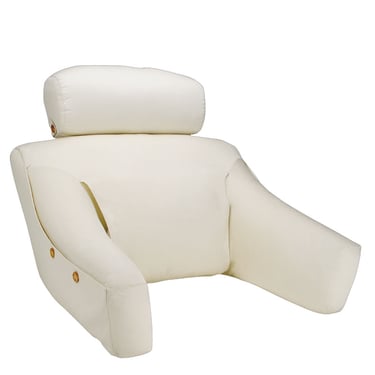
- If you have a tough time with coughing or breathing when you are going to sleep, prop yourself up with some pillows so you aren’t laying flat on your back. You can also purchase a reading pillow or a wedge pillow if you want something that is designed to prop you up. A more expensive pillow option is the Bed Lounge, however, it is fully adjustable and has the ability to recline. Another way you can prop yourself up is by sleeping in a recliner. This is one method we have seen multiple COPD patients mention they use online and they swear by it!
14 Hacks and Tips to Simplify Daily Living

Due to the debilitating nature of COPD, daily living can be frustrating and demoralizing. Not to mention, the disease causes your body to use more energy doing even the mellowest of tasks. Even when you are at rest with COPD, your body has to work harder to breathe. These tips and hacks are meant to help you conserve energy throughout the day, simplify daily living, and make living with COPD more manageable.
1. Have a set schedule for chores and housework
- If you are still doing the cleaning, the laundry, and other housework it helps to have a set routine or schedule to follow. This will help you organize your week, manage your time, and it gives you the ability to get stuff done without overexerting yourself. You know how often you need to do things to keep your house up to your standards so it should be an easy schedule to make. Just write it out on a calendar or set a daily chore schedule using your smartphone’s calendar or reminders feature and stick to it the best you can!
2. Save energy in the shower
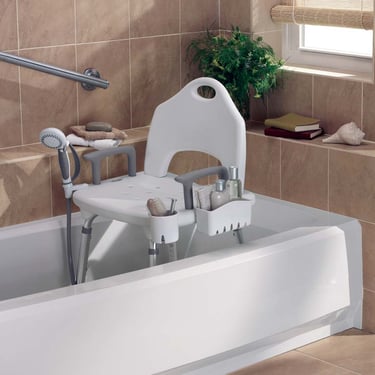
- Showering has been a part of your routine since you were a child, however, there’s a good chance your COPD can make showering difficult and tiresome. To help reduce the amount of energy it takes to shower, use a shower chair so you can sit down whenever you need a break from standing to catch your breath. You can also use a removable showerhead to make using your shower chair as easy as possible. The removable showerhead will give you full range of motion while you are sitting down and you won’t have to stand up to shower unless you want to.
3. Pick your outfit the night before
- To reduce the time it takes you to get ready and to save you multiple trips to your closet in the morning simply pick out your outfit before you go to bed. Just make sure you check the weather report before you pick your outfit.
4. Wear easy to remove shoes
- Wearing shoes that are easy to remove can make a huge difference in your everyday life. Although the act of taking shoes on and off seems harmless, when you have to bend over to tie and untie your shoes you use a lot of energy and put pressure on your diaphragm which can make you feel short of breath. The discomfort from bending over can also make it harder for you to catch your breath. Get yourself a nice, comfortable pair of slip on shoes that you can wear with anything but formal attire to conserve your energy and avoid bending over.
5. Meal prep for the week to cut down on cooking time and effort
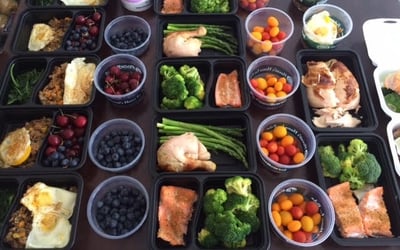
- Meal prepping can make your life a lot easier. Instead of having to make every meal from start to finish, set a good chunk of time aside on Sunday (or any day for that matter) to precook meals for the rest of the week. You can opt to precook the entire meal or just part of it. Meal prep doesn’t just include cooking food though; you can portion out snacks for the week, cut vegetables to be used in meals later in the week, and you can wash fruit for snacks. This is also a great way to start a diet and stick to it. Here is a great beginners guide to meal prepping.
6. Serve food from the original baking dish
- No one really likes doing the dishes after eating a delicious meal. You’re full, satisfied, and ready to relax. To cut down on the time it takes you to do the dishes, serve your food from the original baking dish. This will prevent you from having to clean additional dishes and it also prevents you from having to stretch to reach additional serving dishes.
7. Use a wheeled cart to set and clear the table in one trip
- Instead of bringing plates, bowls, cups, and silverware to the table individually you can use a wheeled cart to bring everything you need in one trip. Keep the cart near your dinner table so when it is time to clear the table you can load everything back onto the cart and wheel it to the kitchen.
8. Simplify hand-washing your dishes
- If you have to hand-wash your dishes you know how much time and effort that takes. To help ease the workload and reduce the amount of energy you use, get a tall stool that will have you sitting above the sink and sit down while washing your dishes. If the leftover food is really stuck on the plate, soak your dishes in hot water and soap to loosen it up and give yourself a break. Once you have washed your dishes, let them air dry with the use of a dish drainer.
9. Have a system for loading and unloading the dishwasher
- Loading and unloading the dishwasher can be a dreaded activity with COPD. It requires a lot of bending and stretching, which can cause discomfort and breathlessness. Before loading your dishwasher, rinse your dishes and organize them into two groups, dishes for the top rack and dishes for the bottom rack. Once your dishes are organized, start loading your dishwasher from the bottom rack up. After your dishes are clean, remove them and put them on a wheeled cart so you can easily transport them around your kitchen in one trip.
10. Use grabbers to avoid bending over and having to reach for things
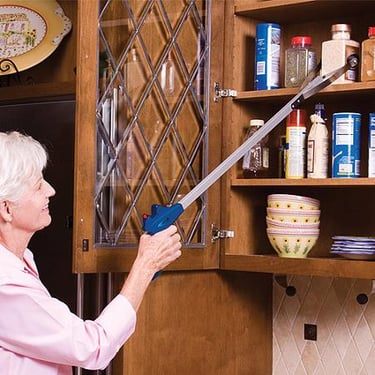
- Bending over and reaching for things can cause some discomfort with your COPD and leave you feeling breathless. Instead of putting the strain on your body, place a grabber in each of the rooms you spend the most of your time in. The grabbers make it easy to pick up anything that you might have dropped and they can reach heights you’d need a stool to reach. They are relatively inexpensive and come in a number of different sizes.
11. Use a wheeled hamper for laundry
- Laundry is one of those chores that almost no one enjoys. If you suffer from COPD you most likely despise laundry more than ever. To cut down on the amount of energy it takes to do your laundry you should use a wheeled hamper to bring your clothes from your room to the laundry room. Once your clothes are dried and folded, use the wheeled hamper to easily bring your clothes back to your room.
12. Do laundry 2-3 times a week and sit down when possible
- Letting your laundry pile up for days on end is never a fun situation to deal with when you’re on your last pair of underwear, not to mention doing all that laundry at once is exhausting just to think about. Instead of letting your laundry pile up, pick a couple days a week to do laundry to reduce your workload. While you are doing your laundry, sit down whenever possible like when folding your clothes to conserve your energy.
13. Use the motorized scooter at the grocery store
- Grocery shopping can be tedious and draining, especially if you aren’t feeling that well. To make shopping easier and less draining, use the motorized scooter they provide at the grocery stores. If you’re going in for a quick item and are having a good day, you probably don’t need to use the scooter. However, if you have a big shopping list or if you’re not feeling 100%, the scooter will make shopping effortless and could help speed up the process if you have to stop to catch your breath when you walk the grocery store.
14. Consider grocery shopping online and pick it up or have it delivered to your house

- This service is relatively new and there’s a possibility it might not be available near you. However, if you check with your local grocery store or Walmart you will be able to find out. The delivery service is great if you’re busy, don’t want to go shopping, or aren’t feeling very well because you don’t have to set foot in a store. Most programs we have found have a minimum order ranging from $30 to $50 and the service also has a fee. That fee varies by store. The pick up service is perfect for any occasion. All you have to do is place your order online and schedule a time you are going to pick your order up. Most stores that offer the pick up service will have a worker bring your order out to you and load it into your car. Walmart offers this pickup service for free at a lot of their locations, however, depending on your local grocery store, there may be a fee for this service.
Conclusion
Adjusting to life with COPD is not an easy thing to do. The emotional aspect is just as difficult as the physical aspect of the disease, you may blame yourself for having COPD, and the constant ups and downs of the disease can make you feel like giving up. Unfortunately, you can’t do anything to change your diagnosis, but you can absolutely do something to make living with COPD more manageable. These tips listed above are meant to help you simplify daily living, maintain your independence, and stay ahead of the disease.
Try some or all of these tips and see what works best for you. Don’t be afraid to modify the tips to better suit your needs either. If you have some hacks and/or tips that you use and think will help others let us know in the comments below!
Don't let COPD manage your life. Download your free e-book with 13 strategies you can use to prevent and manage COPD exacerbations!




